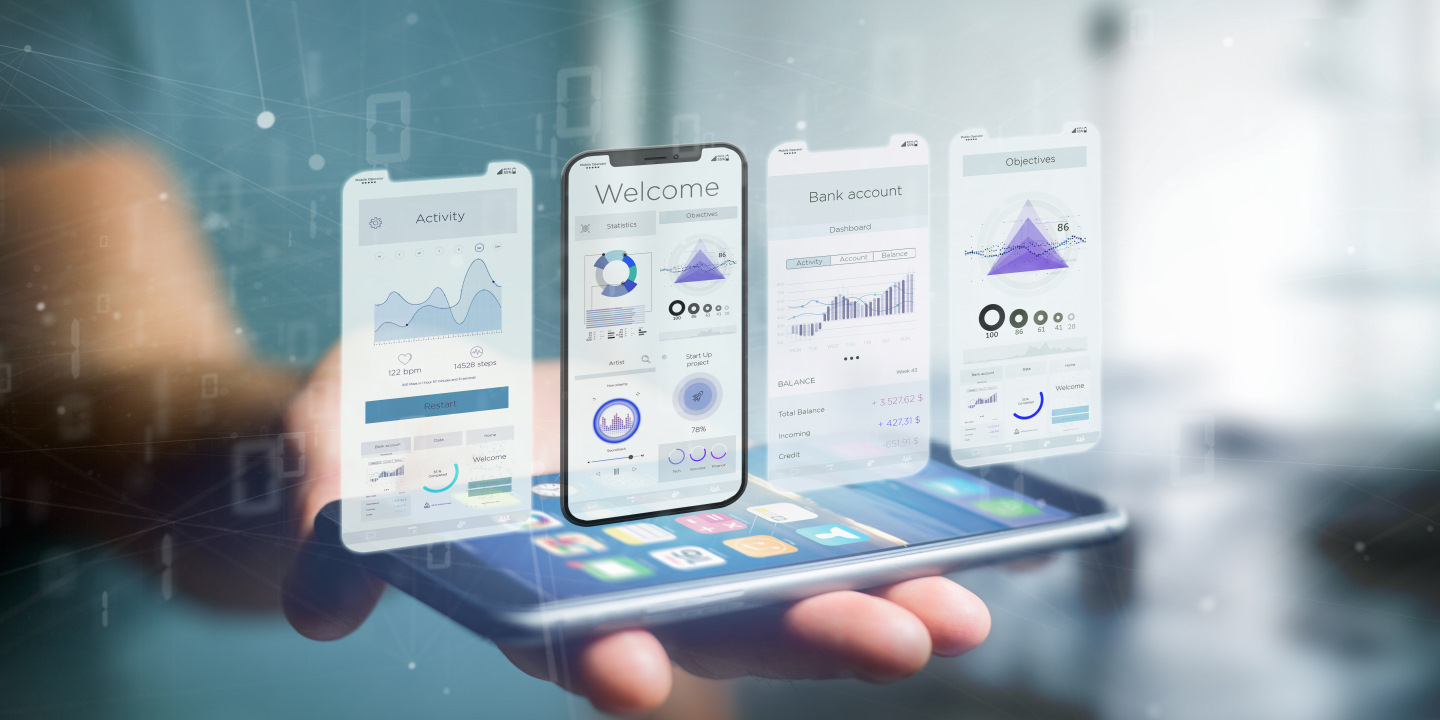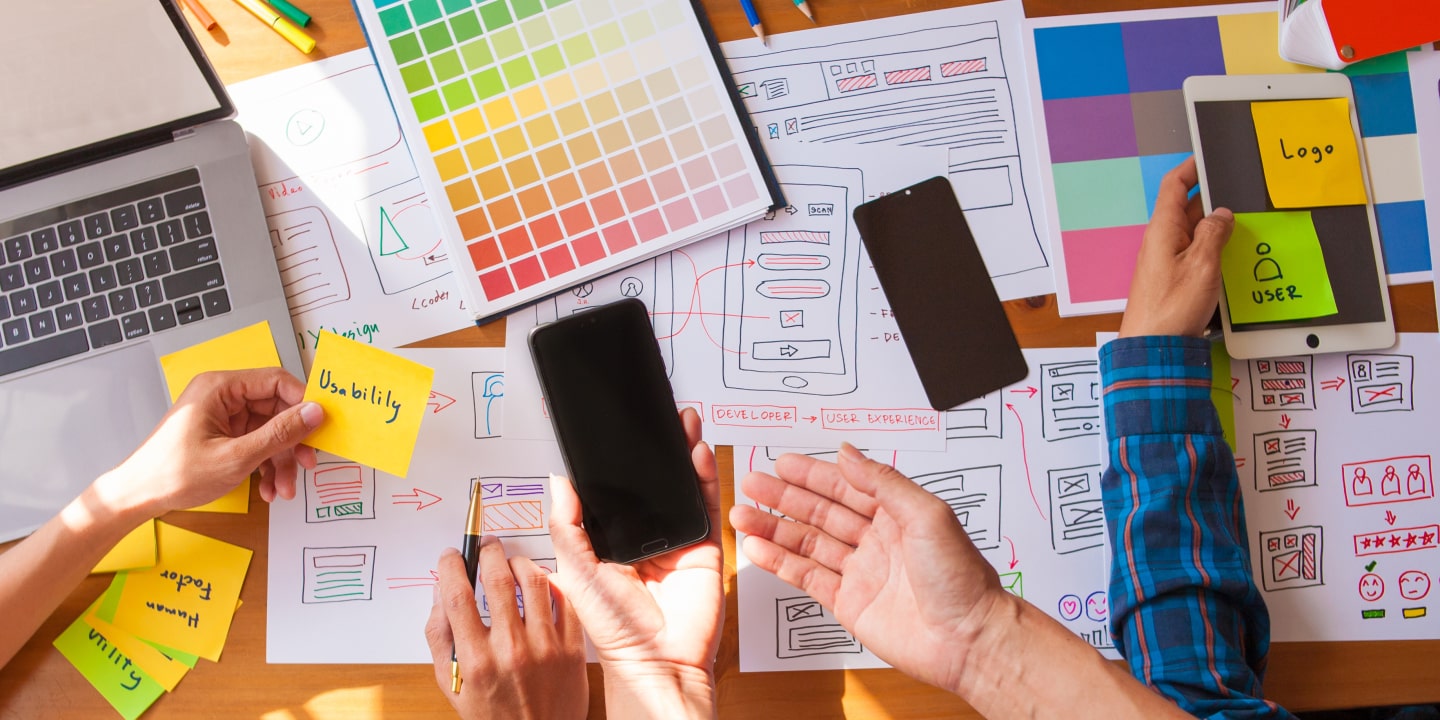The Role of Animation and Motion in UX Design

UX design has evolved significantly recently, with UX motion design emerging as a transformative element. Motion graphics or animation in digital interfaces enhance the user experience through seamless integration and emotional engagement.
This article explores the impact of animation on UX and its essential role in creating intuitive and engaging digital experiences.
By the end of the article, you will know:
- Why use animation in UX design
- How to optimize user experience
- Case studies with real examples
- How technology will influence UX in the future
Why is Animation so Important in UX Design?
Animation has revolutionized UX designs by introducing micro-interactions and animated transitions that focus user attention and create memorable experiences.
Here’s why movement is important in user interaction:
Captures Attention. Movement grabs and engages user attention, highlighting key elements like calls to action.
Enhances Usability. UX motion design improves usability by providing visual feedback, confirming actions like completions or page loads, guiding users through processes, and simplifying product use.
Adds Personality. Animation gives a product a unique personality, making it more enjoyable and appealing. This can strengthen the emotional connection between the user and the product and increase loyalty.
Boosts Aesthetics. Movement enhances a product’s aesthetics, giving it a modern and elegant appearance. This increases its appeal and likelihood of use.
Prioritize User Experience
A clean, uncluttered interface that focuses on simplicity and ease of use helps avoid information overload. Clear and concise instructions or help options ensure users can effectively use your product.
UX animations should serve a specific purpose. If the goal of an animation is unclear, you should reconsider its expediency. Ensuring that animations enhance user engagement involves guiding user attention effectively and purposefully. Identifying the primary goal of a page helps focus user attention on relevant elements.
Regular user testing helps pinpoint areas for improvement and fosters continuous enhancement, aligning with user needs and preferences.
Optimizing User Experience with UX Motion Design: Best Practices
Effectively incorporating motion into UX design can transform user interactions, making them more engaging and intuitive. Here are several best practices to maximize the benefits of motion design.
Feedback and Guidance Through Animation
Use subtle UX animations to provide real-time feedback. For example, animations can signal users about their input (such as a button press or form submission) to reduce user uncertainty and enhance the interface’s usability. Furthermore, strategic use of motion can guide users through actions or highlight changes in application states, improving the navigational flow.
Purposeful Motion
Every UX design animation should have a clear purpose. Excessive or irrelevant motion can overwhelm users or detract from the user experience. Ensure animations are smooth, quick, and cohesive, enhancing functionality without causing distractions.
Consistency Across the Board
Consistency in UX motion and animation ensures a coherent user experience across all aspects of a product. Uniform use of animation in UX design reinforces user familiarity and comfort with the interface, promoting a seamless interaction from start to finish.
Accessibility Considerations
Make animations accessible by providing options to reduce or remove motion for users who are sensitive to it. This inclusivity ensures the design is user-friendly for a broader audience, meeting individual user needs and preferences.
Empirical Validation
Observing real interactions can reveal how effectively UX animations contribute to the UX, allowing for refinements that more closely match user preferences and behaviors.
Adaptive Animations for Diverse Platforms
Update UX design animations to fit the specific characteristics of different platforms. Mobile interfaces, for instance, require animations responsive to touch interactions and optimized for smaller screens.
Early Integration in the Design Process
Integrate UX motion and animation design early in development to identify potential usability issues. Experimentation with various animation styles and speeds can help determine the most effective approach for the product’s target audience.
Stay Updated with Motion Design Trends
New trends and motion design technologies can inspire you to update animation applications. Advances in software and tools enhance animations’ capabilities and open up new possibilities for creating engaging user experiences.
Case Study: Enhancing UX Design with Animation
Animation in UX design can significantly boost user engagement by making user interface(UI) more interactive, intuitive, and visually appealing. Below are examples of how animation can be effectively used.
Loading Animations
When users access a page and wait for content or search results, loading animations can greatly enhance the experience. These animations, such as a spinning icon or a progress bar, visually indicate that the system is actively processing their requests. By doing so, you make the waiting time feel shorter and less frustrating, mitigating user impatience and enhancing the perception of the system’s efficiency.
Microinteractions
Microinteractions are subtle, often instantaneous UX animations designed to provide feedback and enhance user interaction within digital interfaces. These animations might include visual cues like a button that changes color when pressed or an icon that gently pulses to indicate a new activity.
Microinteractions help clarify that the system has registered and processed their actions by offering instant, visually attractive responses to user actions. This immediate feedback reduces uncertainty and makes the user’s interaction more intuitive and appealing.
These animations create a more dynamic and interactive environment, making users feel more connected to the interface. They enhance usability by visually guiding users through tasks, highlighting important actions, and confirming successful operations. This makes the interaction more enjoyable and helps prevent errors and confusion.
By finely animating elements, designers can sustain user interest and encourage prolonged interaction with an app or website, ultimately leading to greater user satisfaction and retention. Despite their small size, micro-interactions make the digital experience seamless and responsive, fostering a stronger emotional connection between users and the product.
Navigation Transitions
Navigation animations utilize dynamic effects as users move between different sections or pages of an app or website. These animations provide a smooth and visually appealing transition, helping users maintain their orientation and ensuring a seamless interface navigation experience.
Whether through sliding, fading, or scaling effects, these transitions offer visual cues that gently guide users from one place to another. This reduces cognitive load and enhances the overall user experience. Adding smoothness and elegance to the navigation process, these animations promote a sense of perfection and professionalism, engage users, and immerse them in the content.
Transition animations make navigation more pleasant and empower users to feel more in control of their journey through the interface. Clear visual feedback and navigation transitions minimize confusion and disorientation, improving user confidence and satisfaction.
Animations can add elements of delight and surprise, encouraging users to explore further and engage more deeply with the application or website. Navigation transition animations create a smooth and intuitive navigation experience that enhances usability and makes a positive interface perception.
Onboarding Animations
Onboarding animations guide users through website features and functionalities in a visually appealing way. They can take various forms, such as animated tutorials, step-by-step instructions, or interactive guides highlighting key interface elements.
By breaking down complex processes into simple, manageable steps, onboarding animations help users quickly understand how to use the application, reducing the learning curve and making the initial experience less daunting.
This approach improves the product’s usability and enhances the overall first impression, making users feel more confident and comfortable as they begin to explore the new environment.
These animations capture users’ attention and sustain their interest during the critical first moments of their interaction with the program. Incorporating UX motion design benefits for onboarding ensures that users understand the product’s core functions and benefits.
Moreover, a well-designed onboarding process can significantly reduce user frustration and dropout rates by minimizing confusion and potential errors. By creating a positive and engaging initial experience, onboarding animation helps foster a sense of achievement and satisfaction, encouraging users to continue exploring and engaging with the program over time.
Hover Effects
Hover effects are subtle animations that activate when users move their cursor over interactive elements such as buttons, links, or images. These effects can include changes in color, size, shape, or the appearance of additional information, creating a dynamic and responsive feel to the interface.
Providing instant visual feedback and hover effects shows that an element is interactive. This enhances the overall usability and navigation of the website or application. Such real-time feedback helps users understand which elements are actionable, making the interface more intuitive and appealing.
Hover effects make user interactions more attractive and enjoyable. Responding to user actions, hover effects can make the interface feel more alive and responsive, encouraging users to explore and interact with various elements. This enhanced interaction can lead to greater user satisfaction and longer session durations.
Additionally, hover effects can draw attention to important elements, such as call-to-action buttons or new features, guiding users toward desired actions and enhancing the design’s overall effectiveness. Hover effects help create a more attractive and captivating user experience by making the interface more interactive and visually appealing.
Notifications and Alerts
Notification and alert animations involve visual cues and animated effects to capture users’ attention and convey important messages or updates. These visual elements may include a subtle pop-up window, a sliding notification panel, or an attention-grabbing animation.
With animation, notifications become more noticeable and appealing, ensuring timely information delivery to users about relevant updates or actions. This instant feedback helps users stay informed and interact with the platform with a sense of connection and responsiveness.
These animations provide quick notifications of important events and create a sense of urgency and importance, encouraging users to take action. Visually attractive animations make notifications more attention-grabbing and memorable, increasing the likelihood of user interaction with them.
Additionally, well-designed notification animations contribute to a positive user experience, provide clear and concise information in an aesthetically pleasing form, reduce user frustration, and enhance satisfaction. Overall, notification and alert animations effectively communicate important information and provide timely responses.
Feedback for Form Submission
Feedback animations for form submissions provide visual cues or animations to inform users about the status of their form submission, whether it was successful, or if errors need correction. These animations may include checkmarks, success messages, or error indicators immediately after the user submits the form.
These animations assure users that their input has been received and processed, reducing uncertainty and disappointment. Clear feedback on form submissions also encourages users to correct mistakes and continue with confidence.
Feedback animations facilitate smoother user interaction, guide users through the form submission process, and confirm the successful completion of their actions. By providing instant feedback, users feel more in control of the interaction, leading to increased satisfaction and a higher likelihood of completing the desired task.
Clear feedback animations can help reduce abandonment rates by swiftly addressing user concerns or doubts, maintaining active user participation, and encouraging them to continue interacting with the app or website. Feedback animations for form submissions are vital in enhancing user engagement and satisfaction, providing timely and reassuring feedback throughout the interaction process.
Data Visualization
Data visualization animations present data dynamically and visually compellingly. These animations may include transitions between different data sets, real-time updates of charts and diagrams, or the gradual appearance of data points.
By animating the process of data change and interaction, these visualizations help users better understand complex information, identify trends, and gain insights. This approach makes data more accessible and easier to comprehend, transforming static figures into engaging narratives that capture users’ interest and encourage deeper analysis.
Animated visualizations actively engage users, making data exploration more interactive and enjoyable. They help maintain attention by breaking down information into digestible, sequential parts, allowing users to follow the story the data tells.
This interactive experience makes the data more memorable and encourages users to interact more with the content. Additionally, the dynamic nature of animated data visualizations can spark curiosity and prompt users to explore the data further. By transforming complex data into visually attractive and interactive animations, designers can significantly increase user engagement and ensure that users receive meaningful information from their interactions.
Balancing Animation with Performance Optimization
While animations can significantly enhance user engagement and interface usability, they can also impact an app or website’s performance if not implemented thoughtfully. Striking the right balance between visual appeal and performance efficiency requires careful planning and optimization strategies.
Prioritizing Performance in Animation
Designers and developers must prioritize performance optimization techniques such as reducing heavy animations, optimizing resource usage, and using hardware acceleration. By carefully selecting the types and complexity of animations, it is possible to ensure that the user experience remains smooth and responsive across different devices and network conditions.
Efficient Animation Techniques
Implementing animation methods that prioritize performance, such as CSS animations or hardware acceleration, can minimize the impact on load times and battery usage. Techniques such as lazy loading and resource preloading can further optimize performance. These methods involve loading animations only when they are needed, thus reducing unnecessary resource consumption.
Benefits of Balanced UX Design
By properly balancing animation and performance optimization, designers can create captivating user experiences without compromising speed or usability. This balance enhances user satisfaction and promotes user retention. Adopting these strategies means animations enhance rather than hinder the user journey, providing an attractive and functional interface.
Animation in UX Design: Trends and Innovations
As we look to the future, animation in UX design is poised to create more engaging and interactive experiences, seamlessly blending the physical with the digital environment. Emerging technologies like Augmented Reality (AR) and Virtual Reality (VR) are pushing the boundaries of animation, enabling designers to craft realistic and dynamic interactions that respond to users’ movements and gestures in real time. These advancements promise to transform user interfaces into more immersive and responsive environments.
Integration of Advanced Technologies
Machine learning and artificial intelligence progress will further personalize and contextualize animations, adapting them to user preferences and behaviors. This shift towards more tailored experiences is expected to significantly enhance user engagement and satisfaction by making interfaces smarter and more adaptive.
Moreover, integrating 3D animation and spatial computing offers designers unprecedented opportunities to create rich, multidimensional interfaces beyond traditional flat designs. Utilizing technologies like WebGL and WebXR, designers can develop captivating environments where users interact with objects and content in three-dimensional space. These technological advancements promise a more compelling and memorable experience and open new avenues for storytelling and brand expression in digital interfaces.
Future Prospects
Future trends in UX animation will be characterized by the convergence of new technologies, allowing designers to create more dynamic, intuitive, and personalized user experiences. As we advance, the challenge will be to balance these sophisticated animations with performance, ensuring that user experiences are visually impressive, efficient, and responsive. The future of UX design lies in its ability to adapt to technological advancements while focusing on user-centered design principles.
Looking Forward
As these technologies evolve, they’ll help designers create more intuitive and tailored experiences for each user. The challenge will be keeping these sophisticated animations smooth and fast so they work well without slowing down. UX design will likely focus on ensuring that new tech enhances user experience without complicating it.
Final Thoughts
Using animation to keep users interested offers significant benefits for digital platforms. Animations enhance the visual appeal of user interfaces and make them more intuitive and enjoyable. By guiding users through complex processes, providing feedback, and enlivening interactions, animations can reduce cognitive load and boost user satisfaction.
Well-designed animations can create emotional connections with users, increasing loyalty and encouraging repeat visits, which is essential for any digital product’s long-term success.
However, balancing animation use is important to avoid overwhelming users or causing unnecessary distractions. Careful implementation should consider performance impact and accessibility to ensure animations improve rather than complicate user interactions. As technology evolves, the potential for innovative animation techniques expands, opening up more ways to engage and retain users. Ultimately, thoughtfully integrating animation can be a powerful tool for enhancing user engagement and driving digital success.
If you’re looking to leverage the power of animation for your digital platform, our expert development team at Django Stars is here to help you create engaging, user-friendly experiences. Contact us to learn more about our services and how we can assist you in achieving your digital goals.






